'Mysterious' dents on Phobos' surface in Mars
Phobos is a larger satellite and is closer to the surface of Mars than any other satellite in the solar system. Phobos satellite has a rough outer shell, many deep dents on the surface and has a size ratio 17:22:18 ( in km units ). In addition, Phobos is closer to Mars than its small and identical satellite - Deimos , at an altitude of only 6,000km ( 3,700 miles ). The photo below was taken with a high-resolution camera on board the Mars Express international space station in January 2008.
Phobos satellite
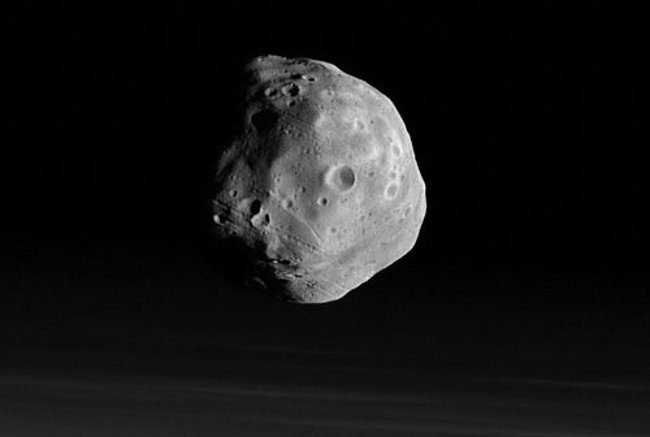 Photo source: ESA / DLR / FU Berlin (G. Neukum)
Photo source: ESA / DLR / FU Berlin (G. Neukum)
Photos of grooves
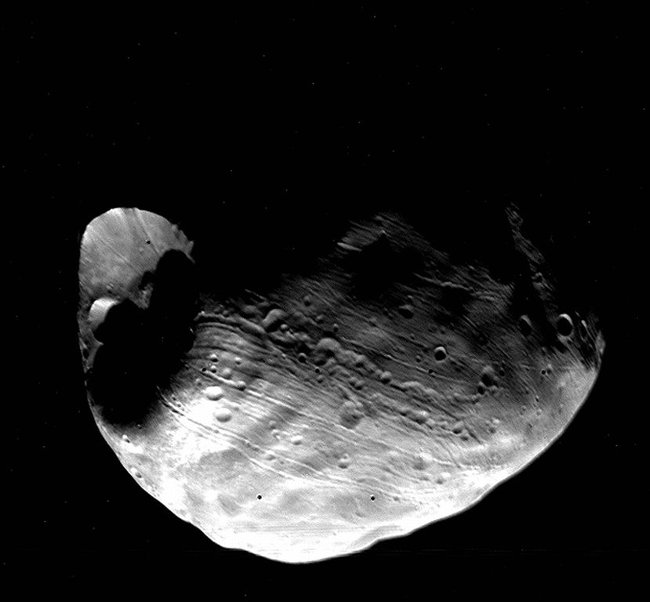 Photo source: NASA
Photo source: NASA
The spacecraft flying in Viking 1 is one of the first spacecraft to go to Mars. This photo was taken on June 10, 1977. The image taken from the Viking 1 spacecraft shows all streaks of stripes, deep dents on the surface of the Phobos satellite. Astronomers find long parallel grooves that create deep cracks or " long stretches " that are caused by Mars's gravitational gravity.
Deep indentations on the surface
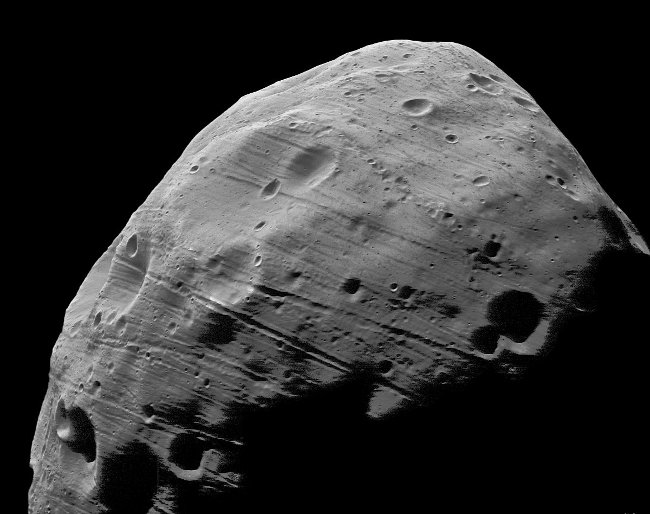 Photo source: ESA / DLR / FU Berlin (G. Neukum)
Photo source: ESA / DLR / FU Berlin (G. Neukum)
The rear image of the moon Mars has shown a " second family " of deep grooves. On July 23, 2008, Mars Express 's high-resolution Stereo Camera on-board stereo camera captured the highest resolution full-disc image of the surface of the moon Phobos . These images show more clearly small, difficult-to-recognize grooves and are not parallel to tidal channels.
Affected by a large "dent"
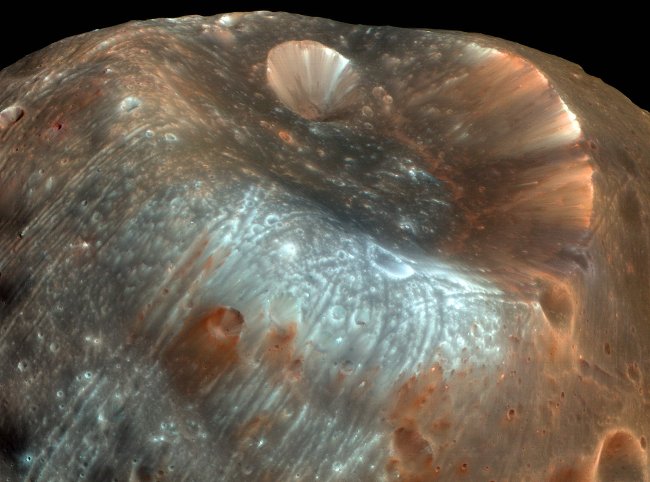 Photo source: NASA / JPL-Caltech / University of Arizona
Photo source: NASA / JPL-Caltech / University of Arizona
The giant Stickney Crater is the largest feature on the surface of Phobos , with a length of nearly 9.5 km ( 6 miles ). Underneath the Stickney Crater is a lunar moon- shaped " dent " - looking like the shape of a partially deflated ball. The above color photo was taken with the HiRISE ( High Resolution Imaging Science Experiment ) camera on the Mars Reconnaissance Orbit ship.
Grooves on Phobos surface
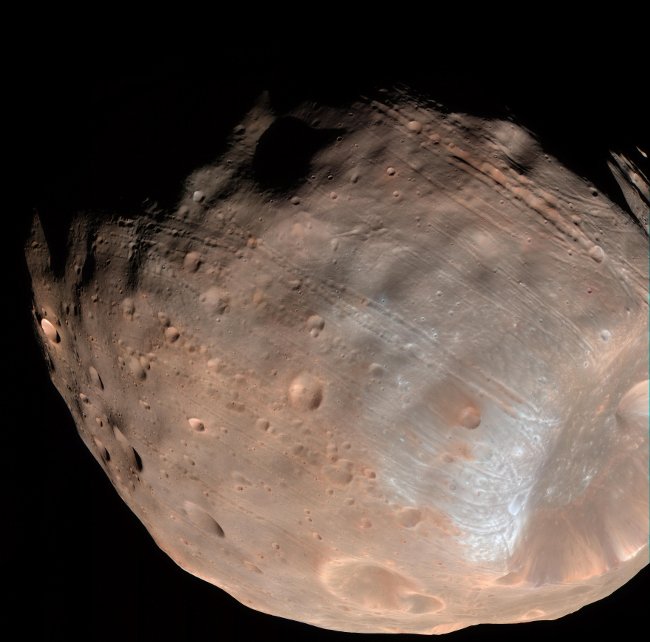 Photo source: NASA / JPL-Caltech / University of Arizona
Photo source: NASA / JPL-Caltech / University of Arizona
Researchers believe that these grooves are not entirely caused by gravity. Instead, they think that this groove may be caused by small series of induced impacts. Furthermore, those small dents are not affected by small asteroids or comets, but could be caused by Mars fragments on the moon when large impacts occur on the planet itself.
Moon model "concave" in orbit
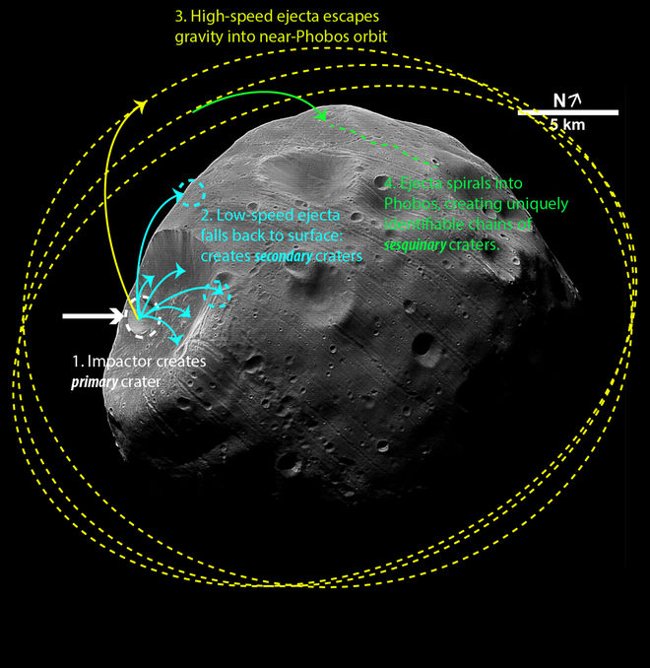
Photo source: ESA / DLR / FU Berlin-Neukum;Note: M. Nayak & E. Asphaug
Recently, researchers at the University of California in Santa Cruz decided to test another hypothesis: "What if the fragments are the cause of a series of small" holes "on Phobos ' surface? not by Mars ". The illustration above clearly describes the sequence of events and scientists have noted the origin of the moons on Mars. ( The trajectory illustration is drawn in the wrong ratio )
Predict the shape of the dents
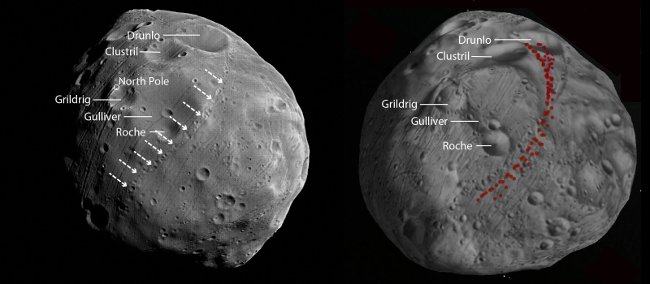 Photo source: ESA / DLR / FU Berlin-Neukum;Note: M. Nayak & E. Asphaug
Photo source: ESA / DLR / FU Berlin-Neukum;Note: M. Nayak & E. Asphaug
Michael Nayak and Erik Asphaug at the University of California and Santa Cruz conducted computer simulations to verify hypotheses about the origin of Phobos tracks. The simulation performed on the computer creates a model that describes the basics or initial impact that causes large indents and blows dirt into space. Following are the second and subsequent impacts that moon debris will return to Phobos' surface. Model a series of dents in the left-hand image that is similar to the predicted model ( right ).
You should read it
- Top 19 incredible facts not everyone knows
- Interesting facts about Mars may be unknown to you
- The 9 biggest mysteries of modern physics make scientists headaches (Part 2)
- It turns out 15 'facts' about the Earth and the universe that we still believe is completely wrong
- 40 interesting facts you didn't know about the Sun.
- 10 interesting facts about the Earth you may not know
 Amazing phenomenon - the 'annular eclipse' glows in the sky today
Amazing phenomenon - the 'annular eclipse' glows in the sky today Why is the voice in the recorder different from the real voice?
Why is the voice in the recorder different from the real voice? How far is the distance from Earth to Mercury?
How far is the distance from Earth to Mercury? Can life really exist in planets - 'can we live'?
Can life really exist in planets - 'can we live'? 10 interesting facts about the Earth you may not know
10 interesting facts about the Earth you may not know The largest aircraft in the world looks like a 'butt' taking off for the first time
The largest aircraft in the world looks like a 'butt' taking off for the first time